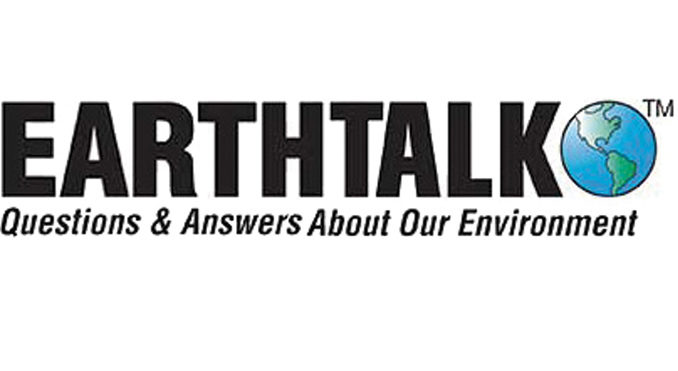
Dear EarthTalk: I’m going into my senior year in high school and am looking for a college focused on sustainability where I can major in environmental studies. Any ideas? ~ Mike Mitchell, Oakland, CA
Depending on how deeply you want to go into environmental studies, there are many colleges that could meet your green-minded learning needs. A great place to begin research is the Princeton Review’s annual “Guide to 399 Green Colleges.” The 9th annual version was released late last year and ranked the College of the Atlantic (COA) in Bar Harbor, Maine as the nation’s greenest institution of higher learning. Completing the Top 15, in rank order: SUNY Syracuse, University of Vermont (UVM), Dickinson College, St. Mary’s College of Maryland, Colorado State, Pitzer, Cornell, Randolph College, Stanford, UC Davis, Seattle University, Santa Clara University, American University and Goucher College.
In general, colleges made the top of the list if sustainability factored prominently in their academic offerings, campus policies, initiatives, activities and career preparation for students. Princeton Review tallied data from survey responses submitted by administrators at 648 different colleges during the 2017-2018 school year. Several of the survey questions drill down on the given school’s sustainability-related policies, practices and programs, weighting 25+ data points to create a “Green Rating” score on a scale of 60 to 99 for each college surveyed, with 399 colleges qualifying as “green” with overall scores of 80+.

It’s no surprise that COA, established in 1969 as the first American college to focus primarily on the relationship between humans and the environment, has topped the list for three years running. With only 350 students and 35 faculty members, small classes and focused learning are the norm at COA, which has been churning out environmental leaders for five decades. It became the first carbon-neutral college in 2007 and plans to be completely rid of fossil fuels on campus by 2030.
At the #2 school on the “green colleges” list, SUNY Syracuse’s College of Environmental Science and Forestry, students and faculty work together on developing innovative solutions to environmental challenges and can focus on applying what they learn in internships reserved for them with the New York Department of Environmental Conservation.
Next on the list, UVM has incorporated sustainability into campus policies and curricula for decades, but has recently shown renewed leadership with its Sustainable Entrepreneurship program and campus-wide commitment to waste reduction and energy conservation. UVM has been sourcing all of its energy from renewables since 2015, with solar panels all over campus to make the most of the fleeting Vermont sun.
Some other schools with excellent environmental studies and science programs include Antioch, Reed, Middlebury, Colby, Colorado College, Montana State, Evergreen State, Pomona, and the universities of Idaho, Michigan, Montana, North Carolina, Texas, Washington and Wisconsin. In fact, today it might be harder to find a school with no regard for sustainability than otherwise, so you should find a college where you feel at home on campus and then make sure the academic programs line up with your own green perspective.
CONTACTS: Princeton Review’s “Guide to 399 Green Colleges,” princetonreview.com/college-rankings/green-guide?ceid=green-colleges; College of the Atlantic, coa.edu; SUNY Syracuse’s College of Environmental Science and Forestry, esf.edu; University of Vermont, uvm.edu.
___________________________________
Dear EarthTalk: Since China stopped accepting American recyclables for processing in 2017, is it still worthwhile for us to even bother recycling here in the U.S.? ~ Jim M., Norfolk, VA
The short answer is yes, it’s still worthwhile for us to recycle, even if it’s not as easy and more expensive than it used to be, especially when you consider the costly and environmentally dubious alternative of creating new products out of all-virgin materials. That said, China’s decision to stop accepting most recyclables from other countries beginning in January 2018 did send shockwaves around the world. For the previous 25 years, China was gladly importing more than half of the world’s plastic garbage for reprocessing into new products.
It seemed like a win-win situation, but the Chinese started to tire of dealing with a deluge of soiled recyclables from abroad. Also, years of economic growth and rising consumption means the Chinese are now producing plenty of waste on their own; they no longer need to rely on waste imports to keep their recycling plants humming. It’s for these reasons that the Chinese government invoked its “National Sword” policy, banning the import of 24 types of solid waste and setting a much tougher standard for contamination levels on the recyclables it would accept. Waste handlers in the U.S. and other developed countries where landfill space is short were left in the lurch and forced to rethink how to move much of their “feedstock” along now that China is no longer willing to take it.

Credit: Mali Maeder, Pexels.
In the meantime, a few Southeast Asian countries (Malaysia, Thailand, Vietnam, Indonesia and India) stepped up to fill the void by taking larger loads of our waste. But poorly run waste management practices and lack of government oversight lead to conditions where only about 10 percent of potentially recyclable waste sent to these countries gets recycled. According to a recent World Bank report, much of what doesn’t get recycled ends up in “unregulated dumps or is openly burned…[creating] serious health, safety and environmental consequences.” But more recently, many of these countries are now following in China’s footsteps by tightening up their own rules about what kinds of waste they are willing to accept.
These changes have put some U.S.-based recyclers out of business, but it may have strengthened those left standing, since they have been forced to find new ways of dealing with the waste streams they are responsible for collecting and processing. Instead of shipping it all off, they are recycling as much as possible themselves. While China’s “National Sword” program may have been a headshot to the American waste industry, the result might just be a greener, cleaner, more self-sufficient United States.
American consumers and businesses can help bolster recycling efforts by sorting waste appropriately—don’t mix soiled food containers in with recyclables, keep non-recyclable plastics out of the blue bins, etc.—and encouraging friends and neighbors to do the same so that more of what we do discard can live another day and provide other consumers with a guilt-free way to enjoy whatever came in that plastic bottle or cardboard box.
CONTACTS:
“After China’s import ban, where to with the world’s waste?” dw.com/en/after-chinas-import-ban-where-to-with-the-worlds-waste/a-48213871; World Bank’s “What a Waste 2.0: A Global Snapshot of Solid Waste Management to 2050,” openknowledge.worldbank.org/handle/10986/30317
___________________________________
EarthTalk® is produced by Roddy Scheer & Doug Moss for the 501(c)3 nonprofit EarthTalk.
To donate, visit www.earthtalk.org. Send questions to: question@earthtalk.org

